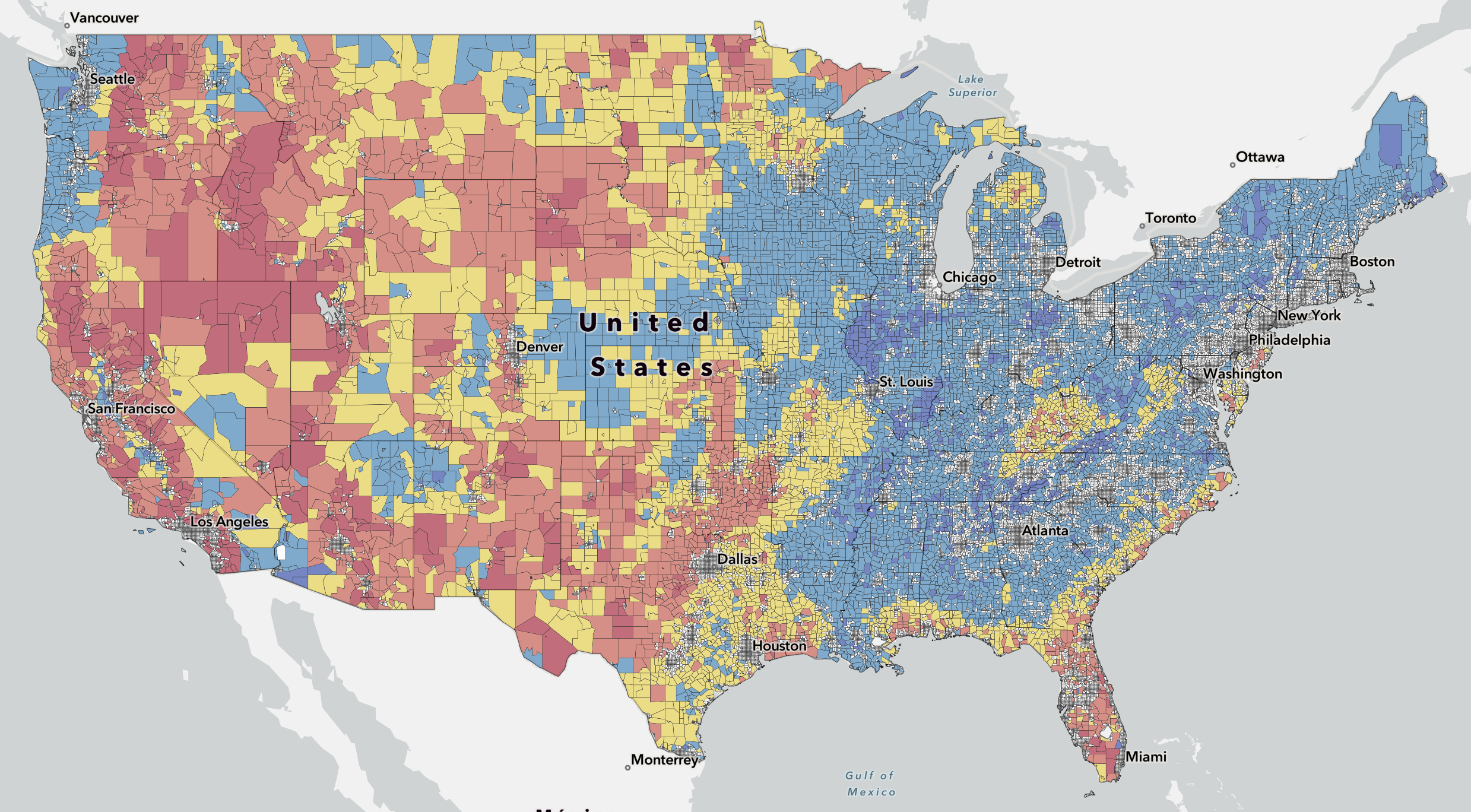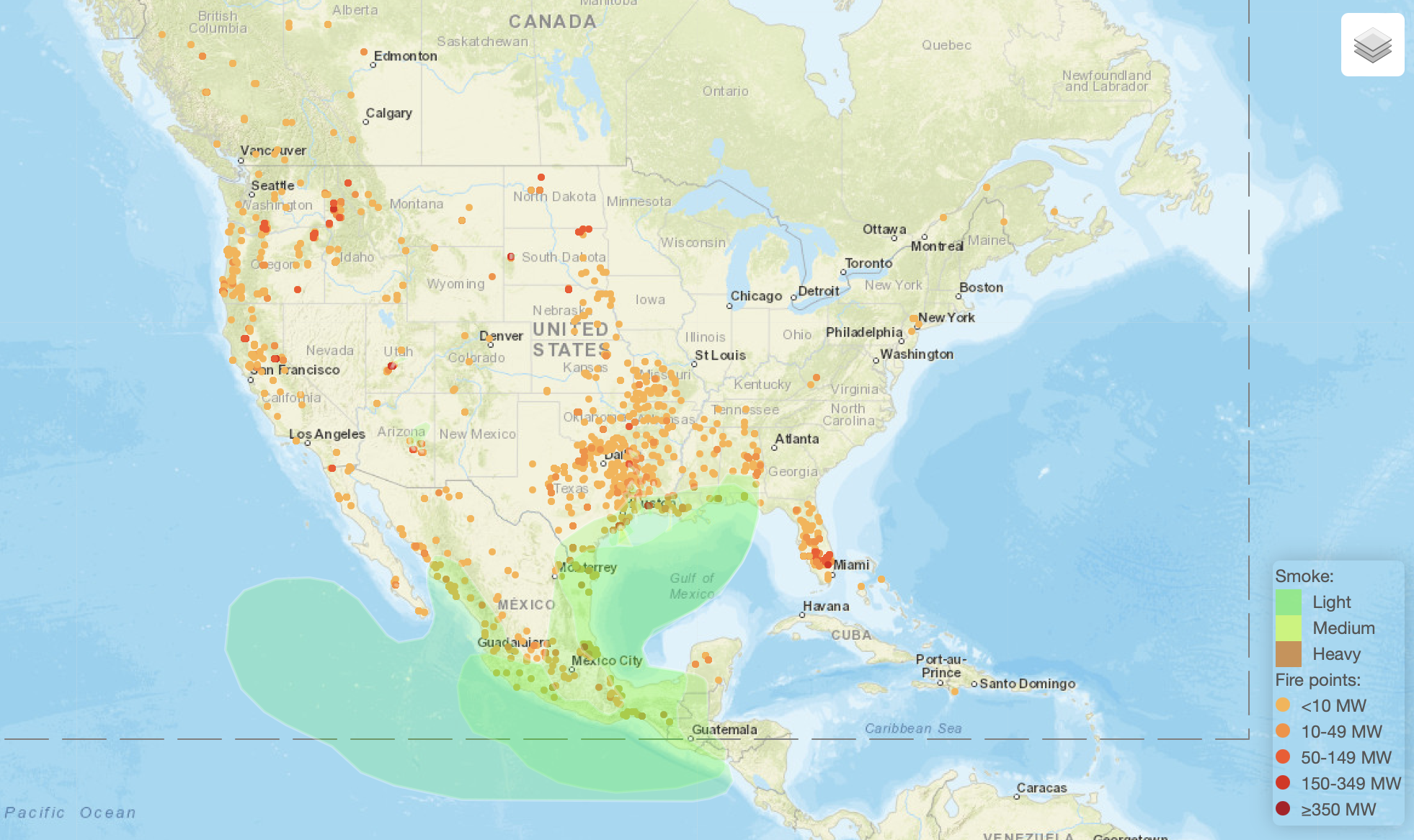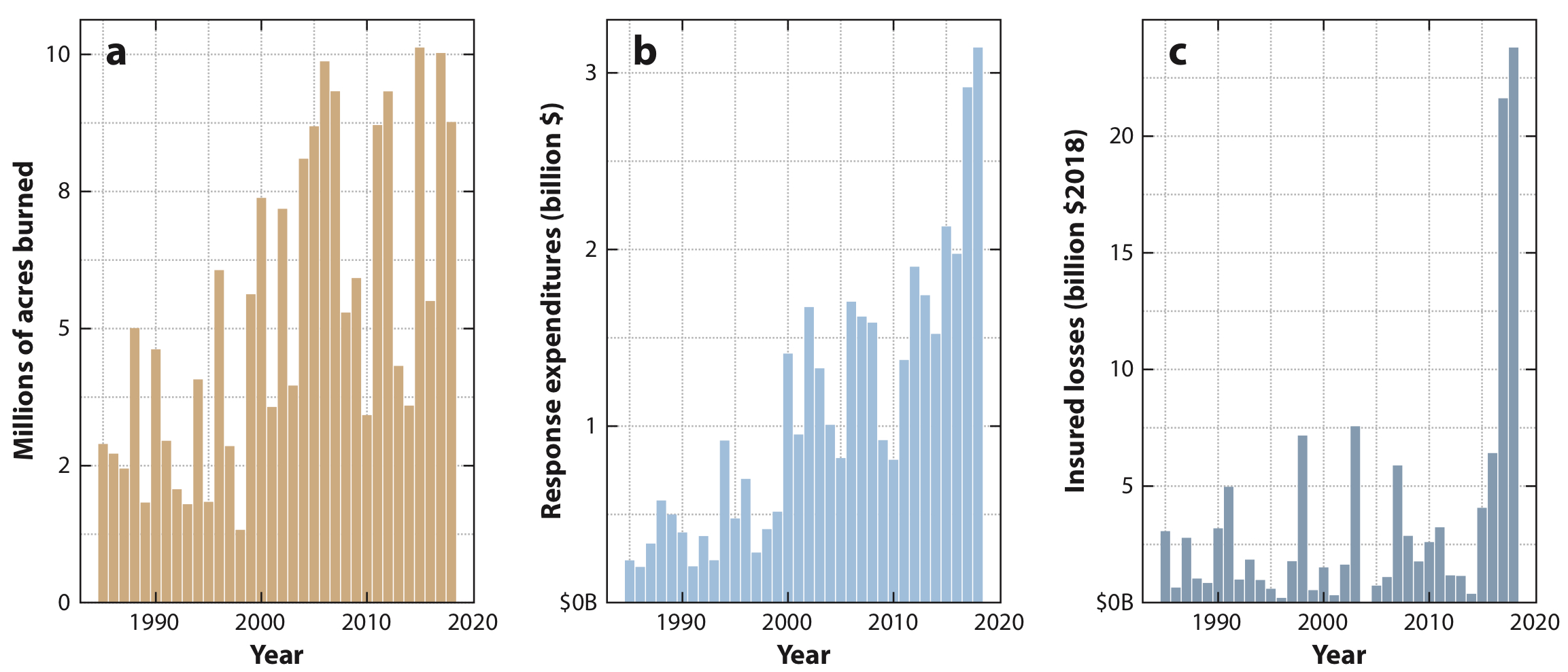Lecture 29
Climate Change III: Adaptation
November 15, 2024
Climate Adaptation: Wildfire Risk and Management
Wildfire Map

- Source: FEMA National Risk Index
Smoke Map

Yearly Trends in Wildfire Outcomes
Acres Burned Annually, Annual Response Expenditures, and Insured Losses

Increasing Severity of Wildfires
- Climate Change Effects:
- Drought and Drier Conditions: Prolonged periods without rain.
- Longer Fire Seasons: Extended periods suitable for fires.
- Global Risk Increase:
- Wildfires occurring in previously low-risk areas.
- Statistics:
- In the western U.S., average annual area burned increased by 1200% from the 1970s to the 2000s.
- In 2020, U.S. wildfire damages totaled $16.5 billion USD.
Health and Environmental Impacts
- Air Quality Degradation:
- Woodsmoke contributes to 25% of Americans’ exposure to PM2.5 (fine particulate matter).
- Associated with increased mortality and morbidity.
- Case Studies:
- Brazilian Amazon Fires: Smoke responsible for nearly 3,000 premature deaths.
- Australian Fires (2019-2020): Health care costs increased by $1.95 billion AUD.
Economic Costs Beyond Immediate Damages
- Infrastructure Damage:
- Runoff and erosion leading to water quality issues.
- Damage to roads, bridges, and reservoirs.
- Agricultural and Recreational Losses:
- Soil degradation affecting farming.
- Loss of recreational areas due to fire damage.
Adaptation Policies for Wildfire Risk
Fuel Management
- Prescribed Burns:
- Controlled fires to reduce fuel load.
- Mimics natural fire cycles.
- Forest Thinning:
- Removal of excess vegetation.
- Reduces intensity of potential fires.
Adaptation Policies for Wildfire Risk
Response Preparedness
- Increasing Firefighting Personnel:
- More resources to combat fires.
- Improved Information Coverage:
- Early detection systems.
- Public awareness campaigns.
Adaptation Policies for Wildfire Risk
Utility Policies
- Power Shutoffs:
- Utilities shut off power during high fire risk conditions.
- Prevents fires caused by electrical equipment.
Adaptation Policies for Wildfire Risk
Building Codes and Development Restrictions
- Wildfire-Resistant Building Codes:
- Use of fire-resistant materials.
- Design standards to prevent fire spread.
- Restricting Development:
- Limiting construction in fire-prone areas.
- Zoning laws to manage land use.
Benefits of Mandatory Adaptation to Wildfires
Homeowners AND their Neighbors?
Objective: Assess effectiveness of mandatory vs. voluntary adaptation.
Data: Property-level data for U.S. homes exposed to wildfire (2000-2020).
Building Codes Reduce Losses:
- Reduced average structure loss by 40%.
- Reduced loss to neighboring homes by 6%.
Spatial Externalities:
- Benefits extend beyond individual properties.
Benefit-Cost Analysis:
- Building codes pass the test for new homes.
- Not cost-effective for retrofitting existing homes.
Benefits of Mandatory Adaptation to Wildfires
Equity Considerations
- Value of Homes:
- Higher-value homes more likely to benefit.
- Fuel Management Bias:
- More likely near higher socio-economic status neighborhoods.
- Policy Implications:
- Need for equitable fire suppression efforts.
- Universal building codes can promote fairness.